
This parent guide supports parents in helping their child at home with the 8th grade Science content.
- Subject:
- Science
- Material Type:
- Reference Material
- Vocabulary
- Author:
- Kelly Rawlston
- Letoria Lewis
- Date Added:
- 10/11/2022

This parent guide supports parents in helping their child at home with the 8th grade Science content.

This resource accompanies our Rethink 8th Grade Science course. It includes ideas for use, ways to support exceptional children, ways to extend learning, digital resources and tools, tips for supporting English Language Learners and students with visual and hearing impairments. There are also ideas for offline learning.
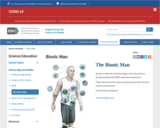
This resource is an interactive click & learn activity in which students visually explore some of the latest bioengineering creations from NIBIB-funded research, such as prosthetics and artificial kidneys.

Students will understand how biotechnology is used to affect living organisms and summarize aspects of biotechnology including how it works, the ethical issues involved, how it benefits North Carolina economically, and careers in biotechnology.
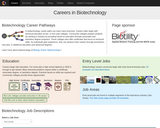
This comprehensive resource from Bio-Link is an alphabetical listing of careers related to biotechnology. Each listing includes a detailed job description, salary information, education and training requirements, and links to short videos that contain additional information and/or interviews with people in that career.

At the end of these lesson(s) students should be able to listen and identify how biotechnology is used to affect living organisms using a graphic organizer and techer created recording/audio script.Students should be able to verbally summarize aspects of biotechnology.

In this lesson, students will conduct research on biotechnology. Then they will form an opinion on biotechnology and genetic engineering. They will then write an essay expressing their opinions using correct form, grammar, and spelling.

In this lesson, students will be able to define biotechnology, identify how biotechnology can help the environment, and identify how biotechnology can improve our food supply.

In this lesson, students will be able to identify specific ways biotechnology can improve food nutrition, safety and quality, identify specific ways biotechnology supports soical, economic and environmental sustainability, and identify specific ways biotechnology helps to meet the increasing needs of the world's growing population.
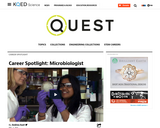
This video story highlights microbiologist Aindrila Mukhopadhyay of the Lawrence Berkeley National Laboratory, whose work involves investigating the most effective ways to use microbes to convert plants into biofuels. Accompanying the video are pre-viewing questions, focus questions for viewing, post-viewing questions, an extension activity for students, and links to related resources.

WIth this resource, students will learn about Biomedical Research as well as how to get a career in that field.

This resource is a colorful inforgraphic on the benefits of biotech crops. The infographic gives students details on increased crop productivity, conserving biodiversity, reducing agriculture's eco-foodprint and mitigating climate change.

This is an interactive resource that allows students determine if facts about genetically modified foods are a benefit or a concern to society while gaining immediate feedback. Please note you will need to enable flash on your browser to use this game
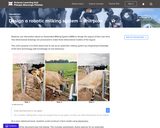
In this activity, students think about how to set up an automatic milking system by integrating knowledge of the farm technology with knowledge of cow behavior. Students will use information about a new Automated Milking System (AMS) to design the layour of their own farm. They will use two-dimensional drawings to make three-dimensional models of the layout.

Students consider the use of mice for bioassays and in establishing the lethal dose when researching/testing toxins. They consider the rights and responsibilities of all those affected by these methods and make a decision as to whether mice should be used in researching and testing for toxins.
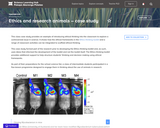
Students use the internet to identify examples of when and why animals are used in research, which animals are used and animal welfare requirements. They will consider the potential harms and benefits to people and the animals affected by research involving animals and then present a written argument, supported by relevant scientific facts, in support of or against the use of animals in research.
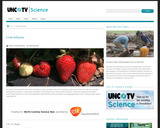
This multimedia resource, part of the NC Science Now series, describes how a North Carolina State University scientist is extracting and concentrating healthy ingredients from fruits and vegetables and infusing them into a protein flour that could be used in powerbars, smoothies, or other foods. Components of this resource include a video, related text articles, a photo gallery, and an interview with a food scientist. Links to these components are provided on the page under the heading "UNC-TV Media."
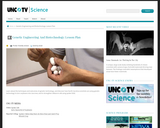
In this lesson, students will learn about the techniques and outcomes of genetic technology, and discover how North Carolina scientists are using genetic technology to turn soybeans into vaccines, and to strengthen silkworm silk using spider DNA.
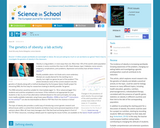
Students read an article that explores recent research into the genetics of obesity and then participate in a DNA extraction activity.

With this interactive resource, students read arguments for and against growing GM crops. Each time they are asked the question, "Based on what you now know, do you think we should grow GM crops?". The next argument students read is chosen for them based on their answer.